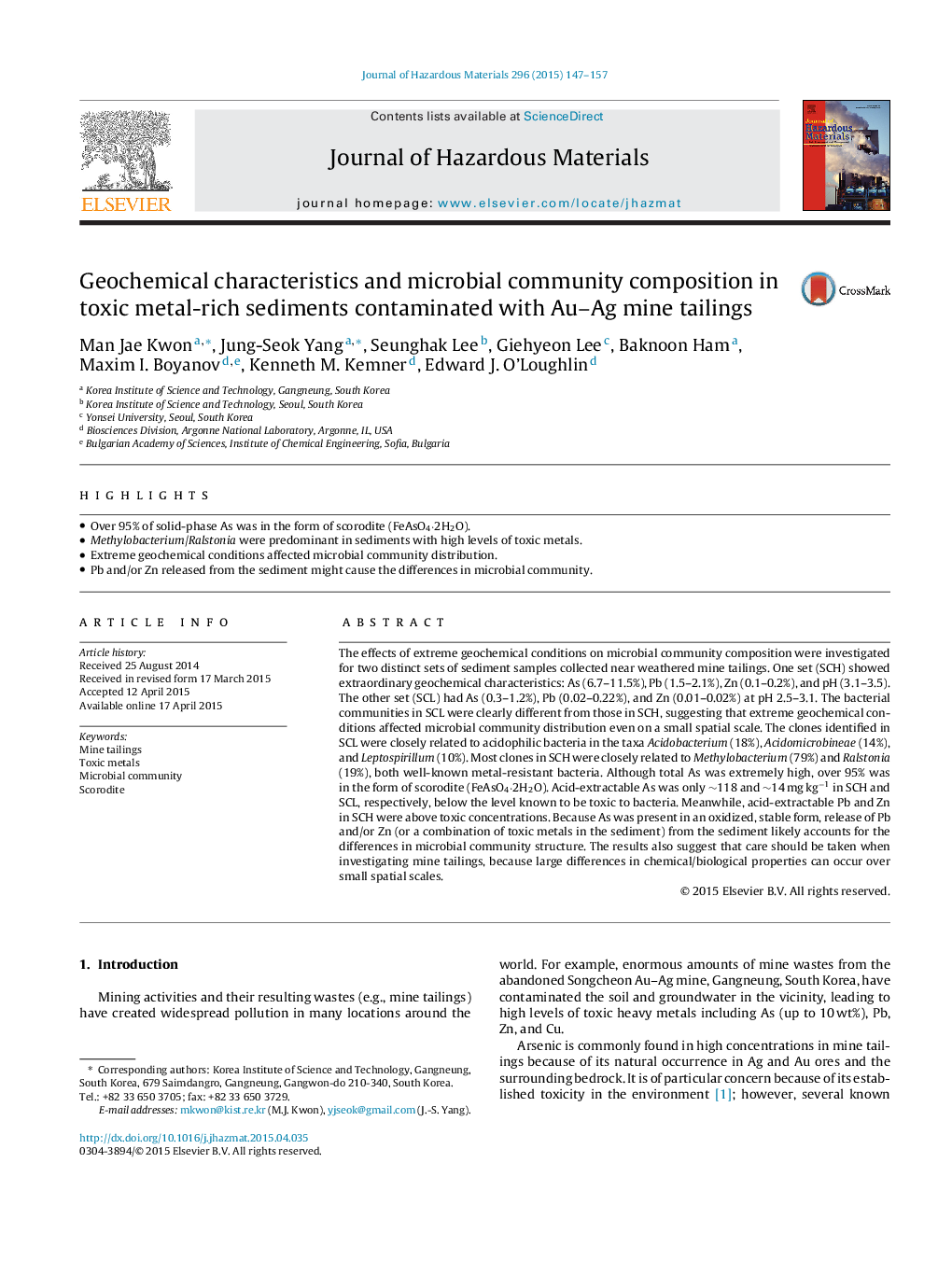| Article ID | Journal | Published Year | Pages | File Type |
|---|---|---|---|---|
| 576054 | Journal of Hazardous Materials | 2015 | 11 Pages |
Abstract
The effects of extreme geochemical conditions on microbial community composition were investigated for two distinct sets of sediment samples collected near weathered mine tailings. One set (SCH) showed extraordinary geochemical characteristics: As (6.7-11.5%), Pb (1.5-2.1%), Zn (0.1-0.2%), and pH (3.1-3.5). The other set (SCL) had As (0.3-1.2%), Pb (0.02-0.22%), and Zn (0.01-0.02%) at pH 2.5-3.1. The bacterial communities in SCL were clearly different from those in SCH, suggesting that extreme geochemical conditions affected microbial community distribution even on a small spatial scale. The clones identified in SCL were closely related to acidophilic bacteria in the taxa Acidobacterium (18%), Acidomicrobineae (14%), and Leptospirillum (10%). Most clones in SCH were closely related to Methylobacterium (79%) and Ralstonia (19%), both well-known metal-resistant bacteria. Although total As was extremely high, over 95% was in the form of scorodite (FeAsO4·2H2O). Acid-extractable As was only â¼118 and â¼14 mg kgâ1 in SCH and SCL, respectively, below the level known to be toxic to bacteria. Meanwhile, acid-extractable Pb and Zn in SCH were above toxic concentrations. Because As was present in an oxidized, stable form, release of Pb and/or Zn (or a combination of toxic metals in the sediment) from the sediment likely accounts for the differences in microbial community structure. The results also suggest that care should be taken when investigating mine tailings, because large differences in chemical/biological properties can occur over small spatial scales.
Related Topics
Physical Sciences and Engineering
Chemical Engineering
Chemical Health and Safety
Authors
Man Jae Kwon, Jung-Seok Yang, Seunghak Lee, Giehyeon Lee, Baknoon Ham, Maxim I. Boyanov, Kenneth M. Kemner, Edward J. O'Loughlin,
